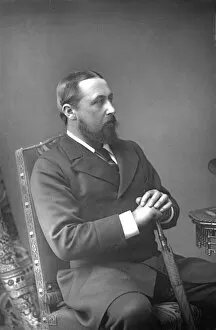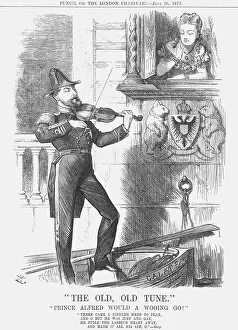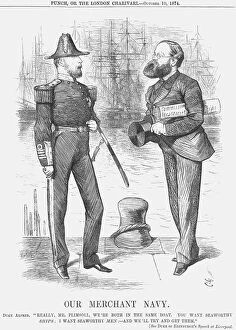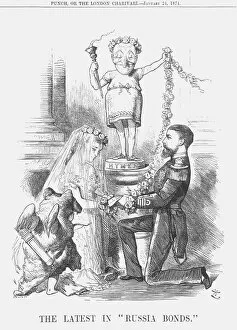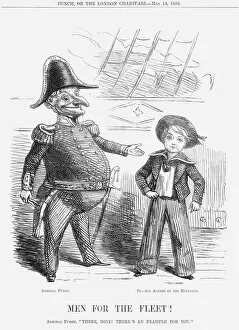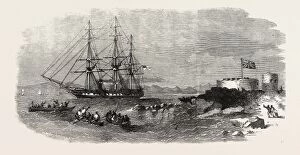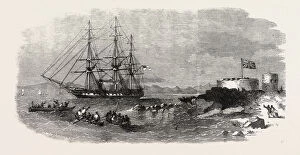Prince Alfred Collection (#3)
Prince Alfred, the beloved second son of Queen Victoria and Prince Albert, was a figure of great significance in both his personal life and his public duties
For sale as Licensed Images
Choose your image, Select your licence and Download the media
Prince Alfred, the beloved second son of Queen Victoria and Prince Albert, was a figure of great significance in both his personal life and his public duties. In 1856, he entered into a momentous union with the Grand Duchess Marie Alexandrovna, marking an alliance between Britain and Russia. The lithography workshop at Day & Sons captured this joyous occasion for posterity. As time went on, Prince Alfred's image evolved through the lens of John Jabez Edwin Mayall in 1860. This portrait showcased his maturity and regal demeanor as he embraced his role as Duke of Saxe-Coburg and Gotha. However, tragedy struck in 1900 when Prince Alfred passed away. A solemn funeral took place in Coburg, Germany—a poignant black-and-white photograph immortalizing this somber moment. Another poignant image emerged from Schloss Rosenau where Prince Alfred lay on his deathbed just days before his passing. The monochrome photograph depicted him surrounded by loved ones during these final moments. Yet amidst these moments of sorrow were also times of celebration. Engravings captured two significant ceremonies: one depicting the Greco-Russian Wedding Ceremony held at the Imperial Chapel of the Winter Palace in St Petersburg; another showcasing an Anglican Wedding Ceremony taking place within the Alexander Hall of the same palace. Prince Alfred's dedication to public service was evident throughout his life. An engraving depicted him opening Edinburgh's Industrial Museum—an event that highlighted his commitment to progress and innovation. Additionally, an engraving showcased Messrs Day and Sons lithographic establishment—an acknowledgment of their collaboration with Prince Alfred to preserve important historical events through artistry. Religion played a crucial role for Prince Alfred too; an engraving portrayed him standing before Pope Leo III—a testament to interfaith dialogue during a time marked by religious tensions. A vibrant color lithograph presented H. R. H. , Duke of Edinburgh—capturing not only his royal status but also his vibrant personality.

